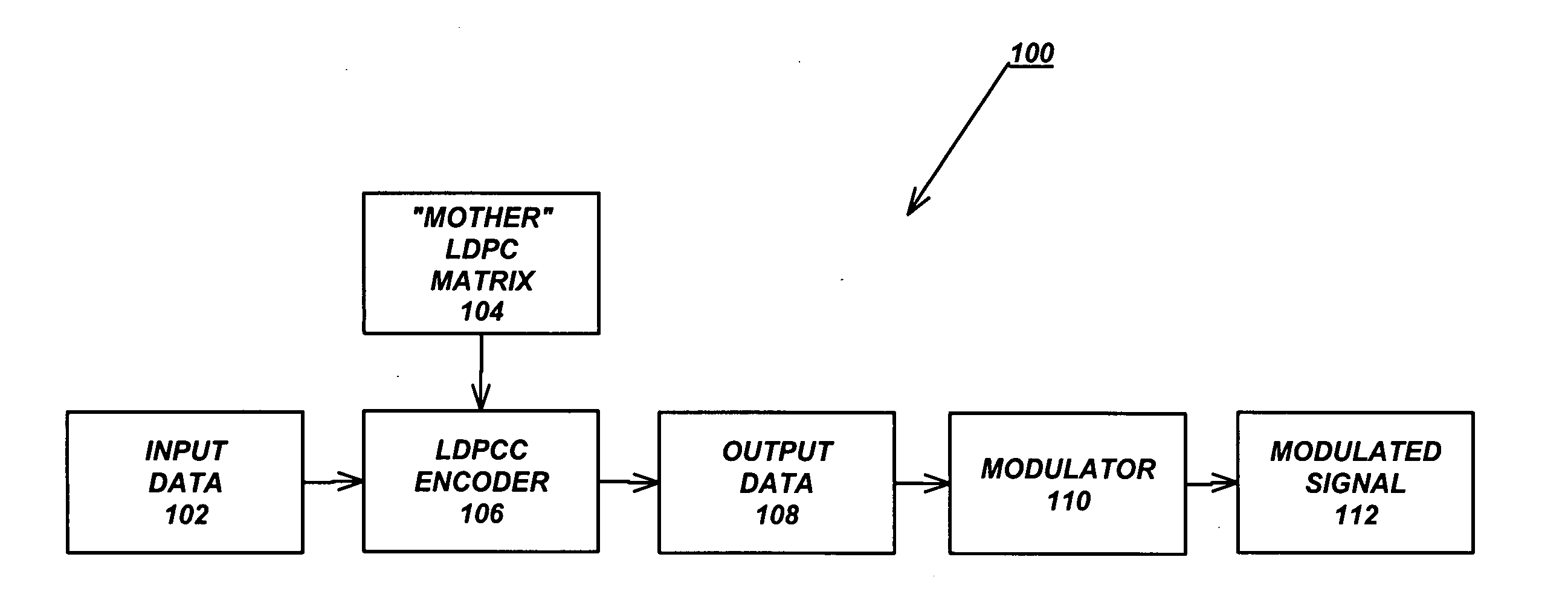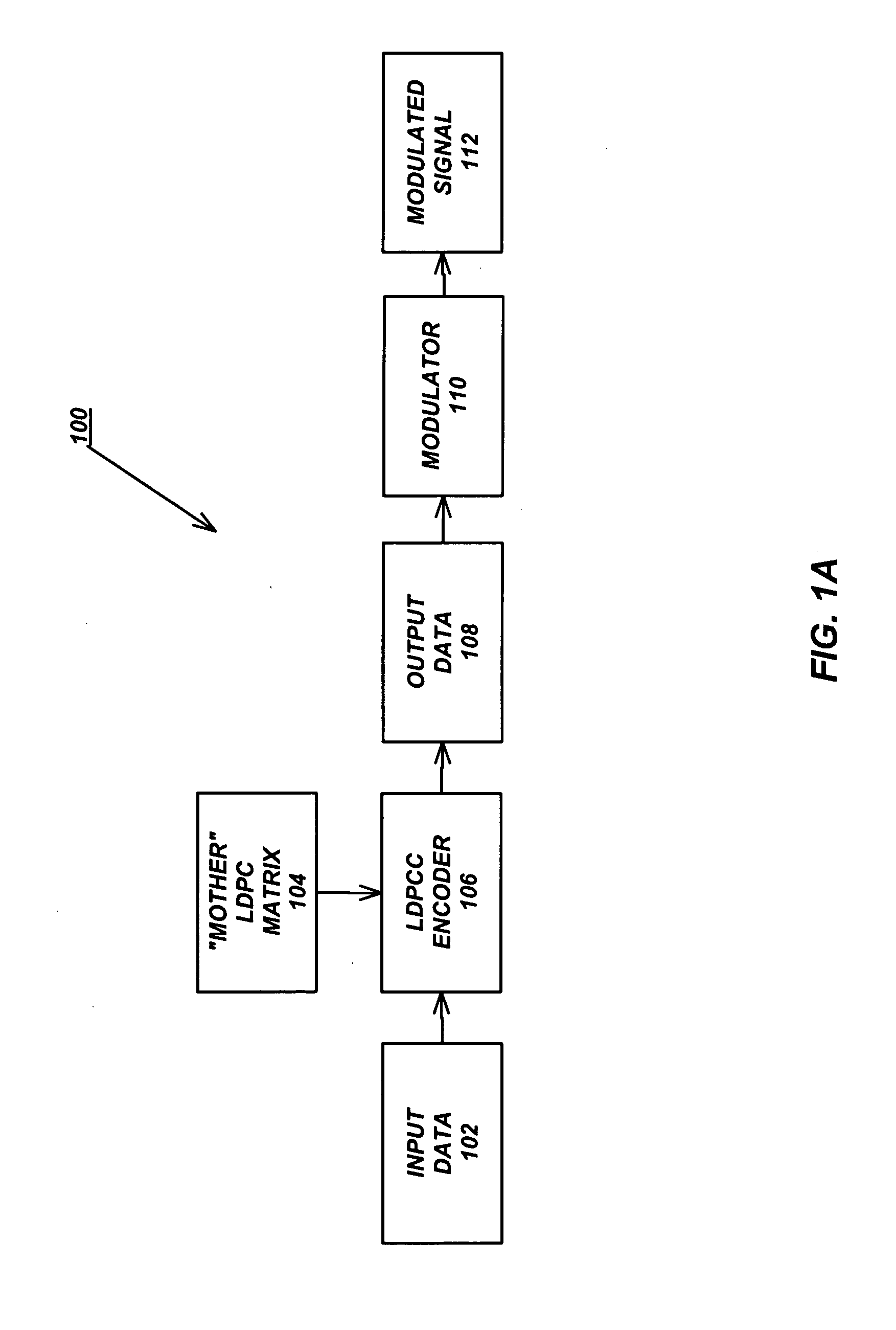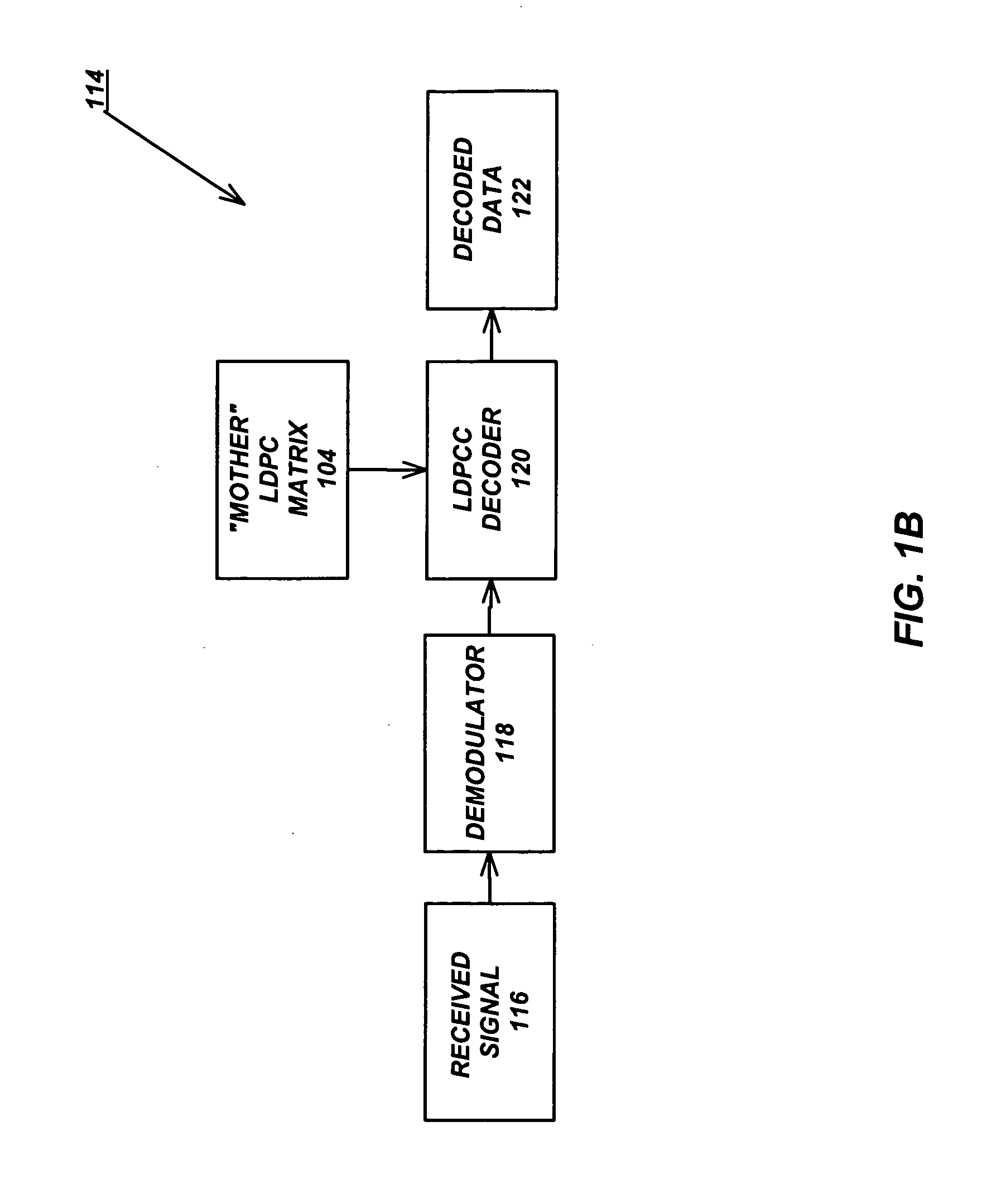Variable-rate low-density parity check codes with constant blocklength
a low-density parity and constant-blocklength technology, applied in the field of data communication and data storage, can solve the problems of significant performance degradation, code blocklength reduction, and performance degradation
- Summary
- Abstract
- Description
- Claims
- Application Information
AI Technical Summary
Benefits of technology
Problems solved by technology
Method used
Image
Examples
Embodiment Construction
[0019] In the following description of a preferred embodiment, reference is made to the accompanying drawings, which form a part hereof, and in which is shown by way of illustration a specific embodiment in which the invention may be practiced. It is to be understood that other embodiments may be utilized and structural changes may be made without departing from the scope of the present invention.
[0020] Overview
[0021] The present invention describes a new method for designing LDPCCs for a variety of different rates that all share the same fundamental encoder / decoder architecture. In the present invention, combining rows of a parity-check matrix for a lower-rate code (a “mother” code) produces one or more parity-check matrices for one or more higher-rate codes (the “effective” codes). An important advantage of this approach is that a plurality of codes with different rates have the same blocklength (a key performance factor). Also, a plurality of codes with different rates have the...
PUM
 Login to View More
Login to View More Abstract
Description
Claims
Application Information
 Login to View More
Login to View More - R&D
- Intellectual Property
- Life Sciences
- Materials
- Tech Scout
- Unparalleled Data Quality
- Higher Quality Content
- 60% Fewer Hallucinations
Browse by: Latest US Patents, China's latest patents, Technical Efficacy Thesaurus, Application Domain, Technology Topic, Popular Technical Reports.
© 2025 PatSnap. All rights reserved.Legal|Privacy policy|Modern Slavery Act Transparency Statement|Sitemap|About US| Contact US: help@patsnap.com



